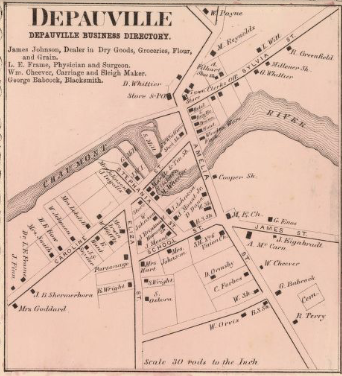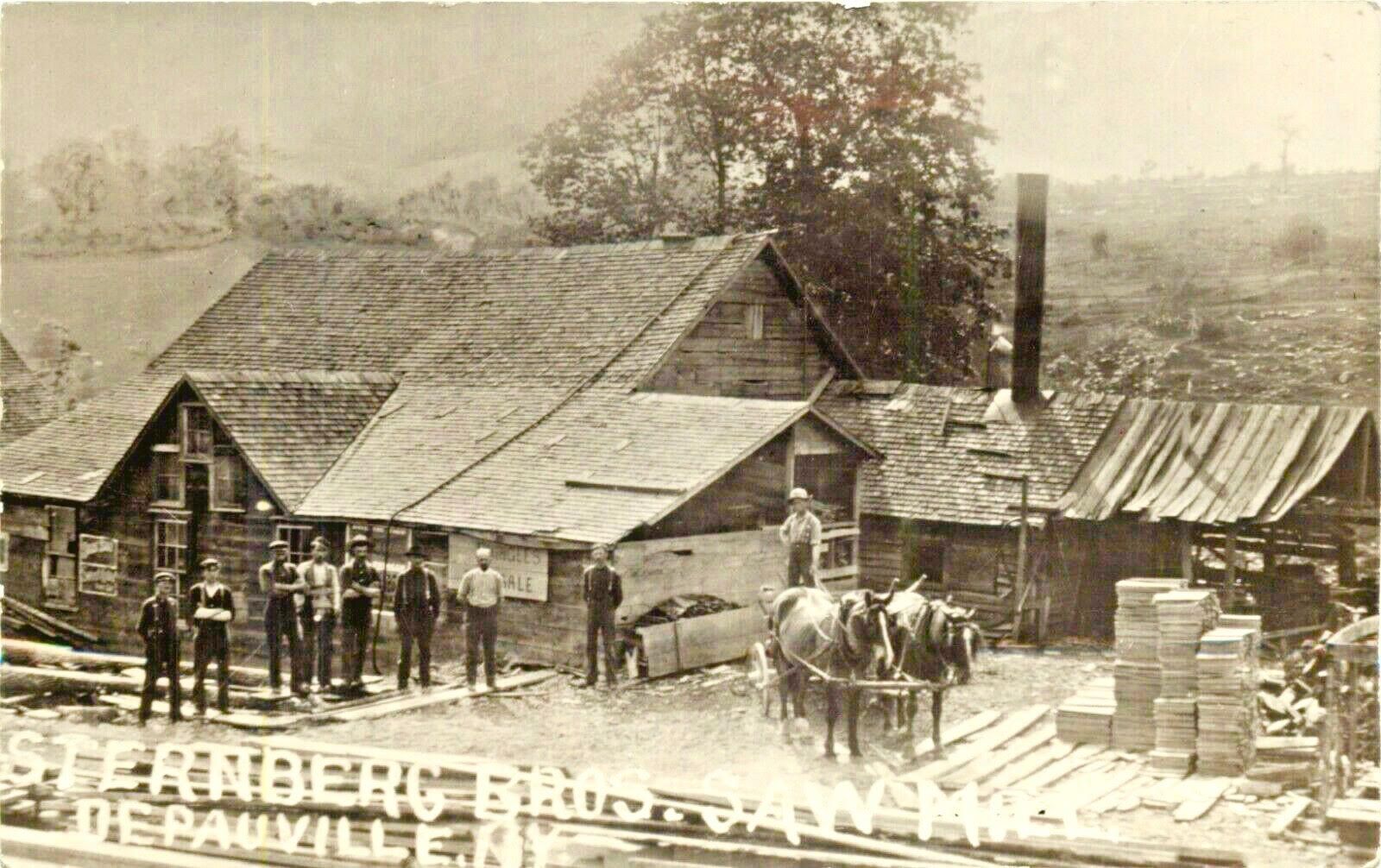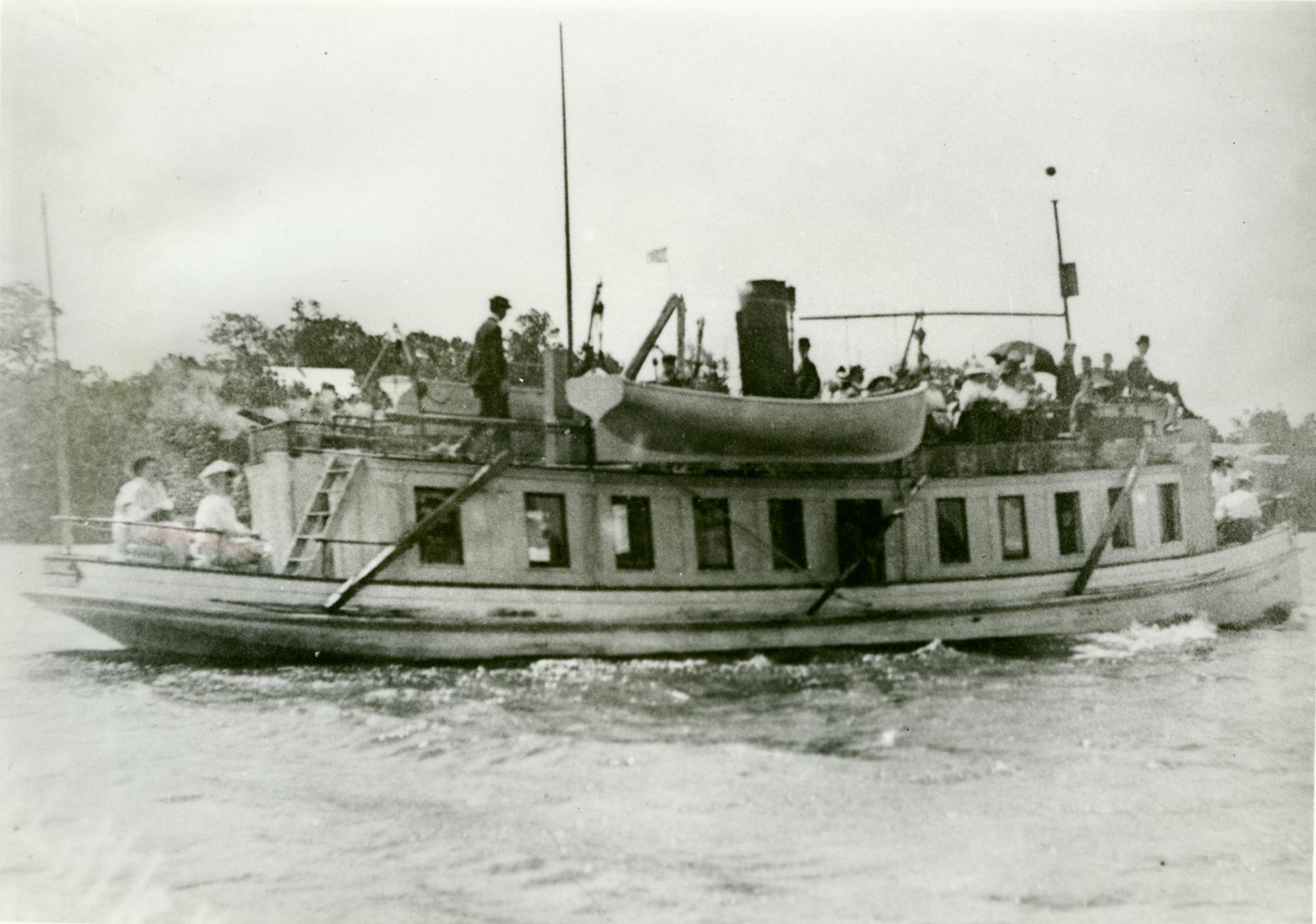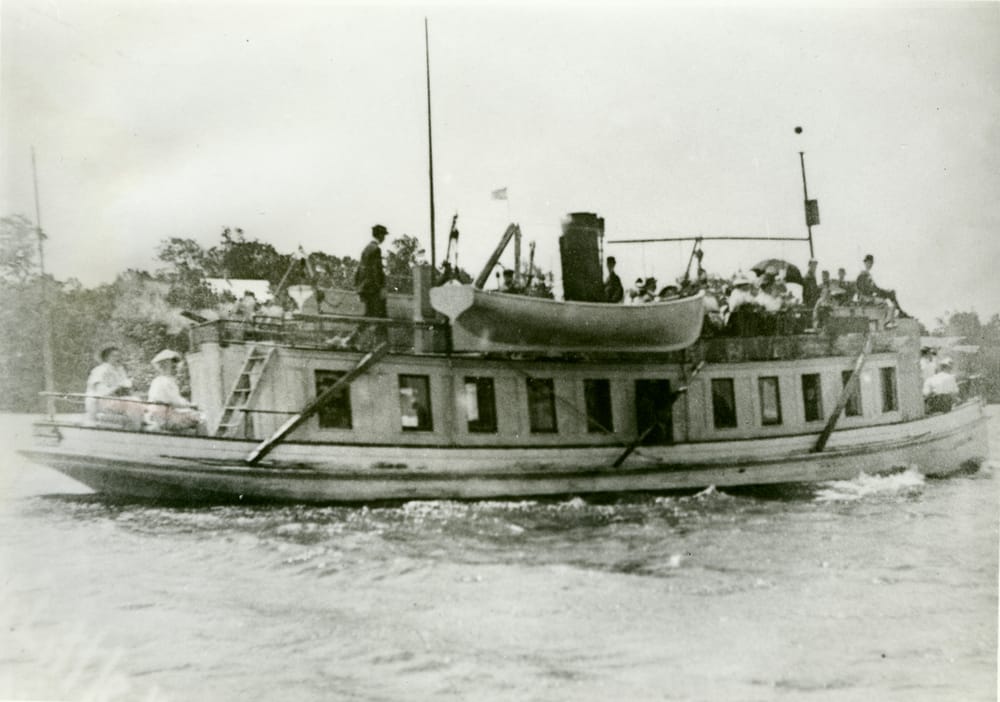Early Navigation on the Chaumont River, Depauville
by: Richard Palmer
To look at the shallow and winding six-mile Chaumont River, running between Chaumont and Depauville, NY, it’s hard to believe that this stream was once navigated by steamboats and even by a sizable schooner.

In pioneer times, the stream was used for rafting logs from Depauville to Chaumont. In its earliest days, Depauville was known as Catfish Falls. Depauville was named in honor of Francis Depau, an importing merchant who purchased 15 lots in the tract known as Penet Square. It was one of the earliest settlements in Jefferson County, and the site of numerous mills and other businesses.
One of the first commercial vessels at Depauville was the two-masted schooner S.P. Johnson, built by Stephen Johnson and William Waffel in 1848. She was 76 feet long, 14 feet 2 inches in width (beam), the hold was 6 feet 2 inches, and registered at 62 tons.
The builders began to worry before the day of launching whether the depth of the river would allow her to float. So they built a temporary dam to raise the water. As a result, the vessel was launched without a problem.
In the early 1860s, the New York State Legislature appropriated funds for dredging and removing all obstructions to make the Chaumont River navigable. A turning basin for boats was created near the center of the hamlet.
Property deeds granted title to the center of the river, creek, subject, however, to the stipulation contained in the patent whereby the land was originally granted. The stipulation provided for a driveway to the landing place or wharf.
A small sidewheel steamer called the M. W. Wright was built at Depauville in 1868, for the Depauville Steamboat Co. Named for M. Watson Wright of Clayton Center, she was 70 feet, 8 inches long, 16 feet wide, and was registered at 34 tons. It had a 25-horsepower steam engine. Later she was sold to new owners on the upper Great Lakes. She was converted to a propeller in 1875 and was finally abandoned at Lake Charlevoix, MI, in 1893. The Depauville Steamboat Co. was headquartered at what was later the Jones home on Caroline street, Depauville, on the banks of the Chaumont River.


While the vessel was operated here, it was manned by a Captain Gillette, who once rammed the vessel into the draw bridge at Chaumont out of anger. It seems the Chaumont authorities would repeatedly miss raising the draw bridge when the vessel was coming and this annoyed Captain Gillette. The incident cost Gillette his job.
In 1903, a railroad drawbridge was built across the river at Chaumont because there was still a significant amount of commercial traffic on the river. This was later replaced by a higher bridge which allowed boat traffic to pass through without the inconvenience of opening and closing the drawbridge.

Another well known Chaumont River vessel, and apparently the last, was the steam yacht Little Mac. She was built in Buffalo in 1886 by Hingston & Son. For years it was a popular excursion boat and especially suitable for use on the Chaumont River and in Chaumont Bay, due to its shallow draft of two feet, four inches. The vessel was 60 feet long and had a beam of 11 feet. She was abandoned in 1930.
Throughout her career, Little Mac had numerous owners, at one time including the St. Lawrence Park Association. Another well-known owner was Captain William Hudson, who also owned the excursion boat New Island Wanderer, which was also chartered for private cruises.
Today, the Chaumont River in the vicinity of Depauville, is a popular fishing area for large and smallmouth bass and northern pike.
By Richard Palmer
Bio to come






Please click here if you are unable to post your comment.